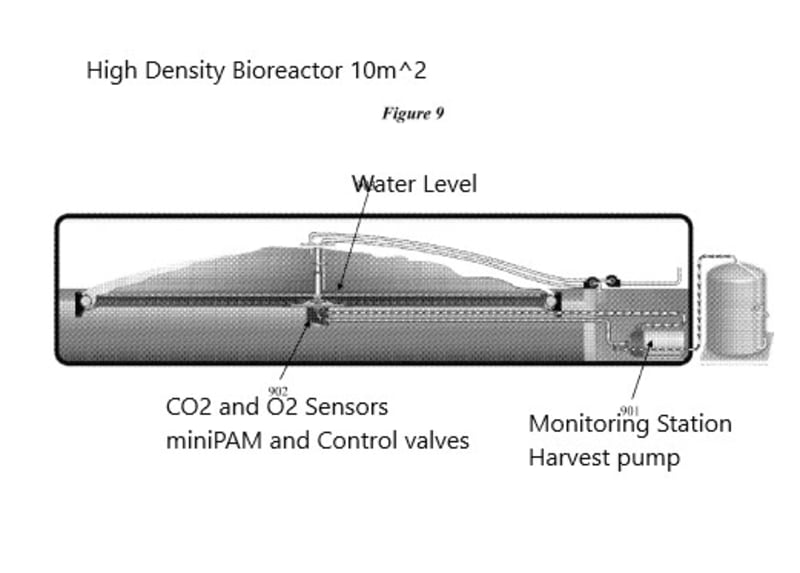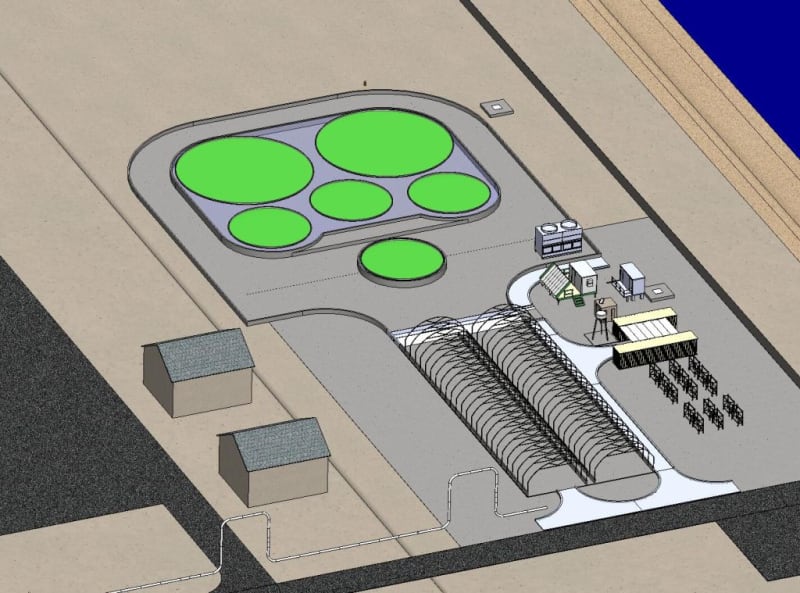Problem
Standard bioreactors used to grow microalgal cultures have made little progress in their potential output to meet the needs of industrial carbon dioxide emissions. Although the potential value of the algal product is high, maintenance is laborious and costly.
Solution
High density bioreactors (HDBs) are more efficient and less costly to maintain by an order of magnitude, resulting in guaranteed profitable harvests. Unlike traditional algae cultivation systems, the HDB can produce high volumes of algae with minimal contamination while ensuring optimal light exposure and culture health.
How it works
The HDB is designed to be a 10^2 meter disk that floats on water, containing a pool of microalgae suspended on reflective HDPE liner. Infrared blocking greenhouse liner encloses the top of the disk to prevent contamination. Carbon dioxide emissions from industrial processes is flowed in through plumbing in the bottom HDPE liner, helping to mix the culture and pressurize the disk. Oxygen and carbon dioxide sensors control pressure relief valves, and a miniPhoto-Analytic-Meter(MiniPAM) records and transmits the total health and density of the algae to a nearby monitoring station. Each HDB has been proven capable of generating 187,000 liters of biomass at 340 grams/liter dried, and one monitoring station can control the product from 24 HDBs. Temperature and mixing of the algae is passively controlled by the body of water the HDB is placed in.
The Market for microalgae and carbon mitigation
Microalgae is a high value crop for cosmetics, nutritional supplements, and health food. As of 2015, the Carbon Trade Economy was worth €5Trillion and set to grow.
Carbon spot prices for eligible types:
- Energy Efficiency – 8.20€/tCO2e + 1€ Fairtrade premium
- Renewable Energy – 8.10€/tCO2e + 1€ Fairtrade premium.
Competition
Companies such as IGV-GmbH are currently worth over €300 million.
Like this entry?
-
About the Entrant
- Name:Ryan Hobbs
- Type of entry:individual
- Software used for this entry:yes
- Patent status:pending





